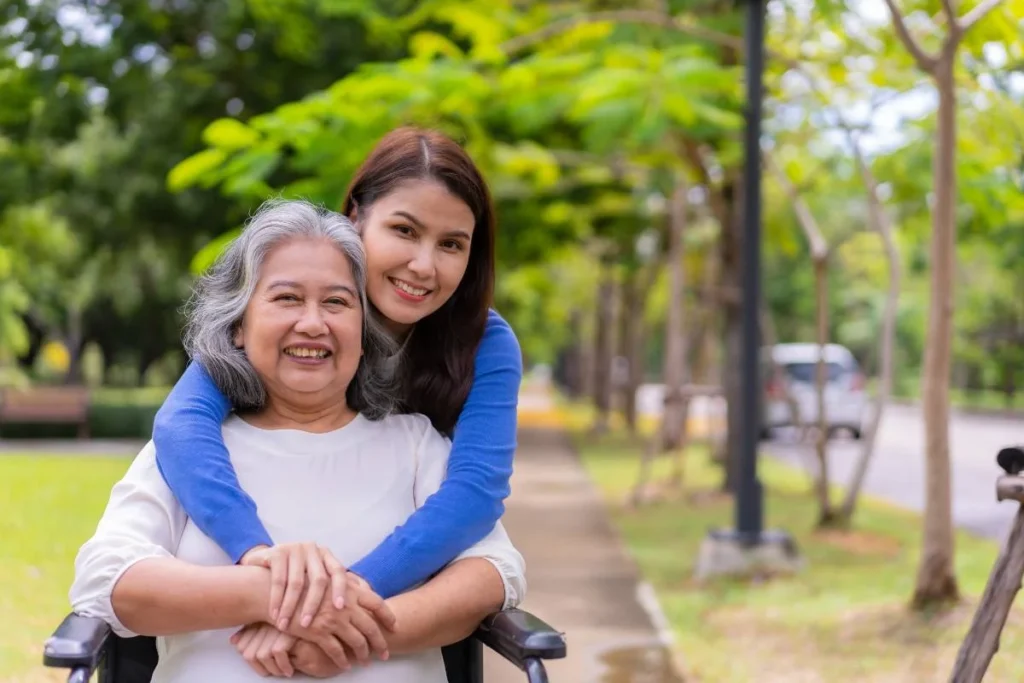Alzheimer’s disease is a progressive neurological condition that affects memory, thinking, and behavior. As it advances, individuals may struggle with daily tasks and communication. Engaging in activities can play a crucial role in maintaining cognitive health.
Participating in various activities not only stimulates the brain but also enhances emotional well-being. These activities encourage social interaction, which can lead to a better quality of life for Alzheimer’s patients. Simple yet meaningful engagements can make a significant difference in their daily experiences.
The Science Behind Activities and Brain Health
Engaging in activities plays a vital role in stimulating brain function for Alzheimer’s patients. Activities that require cognitive effort, such as puzzles or memory games, activate different areas of the brain. This stimulation can promote the growth of new neurons and improve overall brain connectivity.
Research highlights the positive impact of such activities. A study published in the Journal of Alzheimer’s Disease found that individuals who participated in regular cognitive and physical activities showed a 25% slower decline in cognitive function compared to those who were less active. This underscores the importance of keeping the mind engaged.
Structured activities can reduce feelings of isolation and depression, which are common among Alzheimer’s patients. These findings emphasize that a proactive approach to mental engagement can help maintain cognitive health and enhance quality of life.
Art and Craft
Benefits of Art for Alzheimer’s Patients
Art activities offer numerous benefits for individuals with Alzheimer’s. Engaging in creative expression can boost mood and reduce anxiety.
Art serves as a means of communication, allowing patients to express feelings that might be difficult to verbalize.
Art Activities
Simple activities like painting and drawing can provide joy and a sense of accomplishment. These tasks encourage self-expression and can reignite past interests.
Crafts for Motor Skills
Crafting not only stimulates creativity but also enhances motor skills. Patients can benefit from activities that involve cutting, gluing, or assembling objects. These tasks help maintain dexterity and coordination.
Here are some easy craft ideas to try:
- Collage making with magazines
- Simple bead threading
- Painting rocks or stones
- Creating greeting cards
- Decorating picture frames
Incorporating art and crafts into the daily routine can significantly enhance the quality of life for Alzheimer’s patients.
Gardening
Gardening offers remarkable therapeutic effects for Alzheimer’s patients. Being outdoors and surrounded by nature can create a calming atmosphere.
The sights, sounds, and smells of a garden provide a soothing escape, reducing anxiety and enhancing overall well-being.
Simple gardening tasks are perfect for engaging patients. Activities like planting flowers, watering plants, or even arranging pots can be both enjoyable and fulfilling. These tasks help stimulate the senses while promoting physical activity.
Here are some easy gardening activities to consider:
- Planting seeds in pots
- Watering plants with a small watering can
- Weeding flower beds
- Harvesting vegetables or herbs
- Creating a small indoor garden
Connecting with nature not only encourages physical activity but also fosters a sense of purpose. These simple tasks can bring joy and satisfaction, making gardening an ideal activity for Alzheimer’s patients.
Cooking and Baking
Cooking and baking can create a wonderful sense of engagement for Alzheimer’s patients. The act of preparing food allows individuals to connect with their memories and share experiences with loved ones. As one chef said, “Cooking is love made visible.” This sentiment rings true, especially for those battling cognitive decline.
These activities stimulate the senses, invoking smells, tastes, and textures that can spark memories. The vibrant colors of fresh ingredients, the aroma of baked goods, and the hands-on nature of cooking can provide comfort and joy.
Here are some easy and safe recipes suitable for Alzheimer’s patients, focusing on simplicity and sensory engagement:
- Fruit salad with colorful, soft fruits
- Simple scrambled eggs with cheese
- Mini pizzas using English muffins, sauce, and toppings
- No-bake chocolate energy bites
- Yogurt parfaits with granola and berries
These recipes can be modified as needed, making them not only delicious but also a delightful way to spend time together in the kitchen.
Music and Dance
Music has a profound impact on memory and mood, making it a powerful tool for Alzheimer’s patients. Research shows that familiar tunes can evoke memories, improving cognitive function and emotional well-being. Listening to music can trigger positive emotions, reduce anxiety, and enhance overall quality of life.
Dancing complements this by promoting physical health. It encourages movement, improves coordination, and boosts cardiovascular fitness. Simple dance routines can help maintain mobility and flexibility, which are crucial for Alzheimer’s patients.
Here are some suggestions for music and dance activities:
- Classic Songs: Consider timeless hits like “You Are My Sunshine” or “What a Wonderful World.”
- Dance Routines: Try gentle routines like the Cha-Cha or simple line dancing.
- Music and Movement: Engage in sing-alongs or play instruments like tambourines and maracas.
Incorporating music and dance into daily life can foster connections, spark joy, and create lasting memories.
Puzzles and Games
Puzzles and games offer valuable cognitive benefits for Alzheimer’s patients. Engaging in these activities can help enhance memory, problem-solving skills, and overall brain function. Simple puzzles like jigsaw pieces or word searches can stimulate mental processes, keeping the mind active.
Here are some types of puzzles and games suitable for Alzheimer’s patients:
- Jigsaw puzzles
- Crossword puzzles
- Word searches
- Card games (like Uno)
- Board games (like Scrabble or Chess)
Group games also provide social benefits. They encourage interaction, build friendships, and create a sense of community. Playing games together can lead to laughter and shared experiences, which are vital for emotional health.
| Activity Type | Cognitive Benefit |
|---|---|
| Puzzles | Improves spatial awareness and memory recall |
| Card Games | Enhances strategic thinking and social interaction |
| Board Games | Encourages problem-solving and teamwork |
Integrating puzzles and games into daily routines can significantly enhance the quality of life for Alzheimer’s patients.
Social Activities
Social interaction plays a crucial role in the well-being of Alzheimer’s patients. Connecting with others can improve mood, reduce feelings of isolation, and enhance cognitive function. Regular engagement with peers fosters a sense of belonging, which is essential for emotional health.
Encouraging group activities can be simple yet effective. Consider organizing regular meet-ups or themed social events. Here are some ideas for social gatherings:
- Weekly coffee mornings for casual conversation
- Game nights featuring board games or card games
- Art and craft sessions where patients can work together
- Outdoor picnics to enjoy nature and each other’s company
- Music and dance parties to lift spirits
These gatherings not only promote social interaction but also create opportunities for meaningful connections.
Involving family members and caregivers can further enrich these experiences, providing a supportive environment that nurtures relationships. Engaging in social activities can transform daily routines into moments filled with joy and camaraderie.
Technology-Assisted Activities
Technology offers innovative ways to engage Alzheimer’s patients in activities that stimulate their minds.
With the right tools, caregivers can enhance cognitive function and provide enjoyable experiences. Apps like Lumosity and Brain Age focus on memory, attention, and problem-solving skills, making them excellent choices for daily brain workouts.
In addition to apps, virtual reality (VR) experiences have emerged as a powerful tool in Alzheimer’s care. VR can transport patients to familiar places or allow them to experience new environments without leaving their homes.
This can evoke positive memories and feelings of relaxation. For instance, programs like Alzheimer’s VR offer immersive experiences tailored to individuals, helping them reconnect with their past.
These technology-assisted activities not only provide cognitive stimulation but also foster a sense of engagement and enjoyment.
By incorporating these tools, caregivers can create a rich, interactive environment that supports the overall well-being of Alzheimer’s patients.
Storytelling and Reminiscence
Storytelling serves as a powerful tool for memory enhancement. It encourages Alzheimer’s patients to recall and share their experiences, helping to reinforce connections to their past. This can stimulate mental activity and evoke positive emotions.
Reminiscence therapy focuses on engaging individuals in conversations about their past. By discussing events, people, and places from their earlier life, patients can tap into cherished memories. This technique not only boosts cognitive function but also promotes emotional well-being.
For effective storytelling sessions, consider these tips:
- Choose familiar topics: Use family photos or mementos to spark conversations.
- Encourage participation: Invite patients to share their stories without pressure.
- Use open-ended questions: Ask about feelings and experiences to foster deeper discussions.
- Make it a group activity: Gather a small group to share stories together, enhancing social interaction.
These storytelling sessions create a warm, inviting atmosphere where Alzheimer’s patients can connect and reminisce, enriching their daily lives.
Pet Therapy
Interacting with animals can bring immense emotional benefits to Alzheimer’s patients. The presence of pets often reduces feelings of anxiety and loneliness, providing comfort and companionship.
These interactions can spark joy and encourage positive emotions, which are crucial for overall well-being.
When considering pets for therapy, some of the best options include:
- Dogs: Known for their loyalty and ability to connect with humans.
- Cats: Their calm demeanor can be soothing for patients.
- Small animals: Rabbits and guinea pigs offer gentle companionship.
- Birds: Their cheerful songs can uplift moods.
Pet therapy sessions usually involve structured activities, such as petting, brushing, or simply spending time with the animals. A trained therapist often guides these sessions, ensuring that the interaction is safe and beneficial.
This nurturing environment allows Alzheimer’s patients to engage with animals, fostering a sense of purpose and enhancing their emotional health.
Volunteering
Volunteering offers Alzheimer’s patients a powerful sense of purpose. Engaging in meaningful activities can boost self-esteem and foster a feeling of contribution.
When individuals feel they are making a difference, it enhances their overall well-being and helps them connect with others.
There are various volunteering opportunities tailored for Alzheimer’s patients. Some options include:
- Assisting at local food banks
- Visiting nursing homes or shelters
- Participating in community clean-up events
- Helping with animal care at shelters
These activities not only benefit the patients by providing fulfillment and social interaction but also positively impact the community. Patients engage with others, build new relationships, and feel valued for their contributions.
Such connections can lead to improved mental health and a feeling of belonging. Encouraging volunteerism can be a rewarding experience for both Alzheimer’s patients and those they serve.
Practical Considerations
When introducing activities for Alzheimer’s patients, safety is a top priority. Ensure that activities are conducted in a safe environment, free from hazards.
Keep sharp objects, toxic substances, and anything that might cause trips or falls out of reach. Supervision is crucial, especially during physical activities.
Adapting activities to suit different stages of Alzheimer’s can enhance engagement. Here are some tips for making activities suitable:
- For early stages, introduce more complex tasks that stimulate cognitive function.
- In moderate stages, focus on activities with clear steps and shorter durations.
- For advanced stages, opt for simpler, sensory-based activities that require less cognitive involvement.
Caregivers play a vital role in this process. Here are some tips to support them:
- Be patient and flexible; adjust activities based on the patient’s mood and energy level.
- Encourage participation, but do not force it. Respect their wishes.
- Maintain a positive atmosphere to make activities enjoyable.
By considering safety and individual needs, caregivers can create enriching experiences that truly benefit Alzheimer’s patients.
Conclusion
Engaging activities offer numerous benefits for Alzheimer’s patients. They can enhance cognitive function, boost mood, and improve overall quality of life. Whether it’s through art, gardening, music, or social interactions, these activities create meaningful connections and stimulate the mind.
Caregivers play an essential role in facilitating these experiences. Don’t hesitate to try different activities and observe what resonates best with your loved one. Every small effort can make a significant difference. Embrace the journey of exploration together, and witness the joy these moments can bring.





